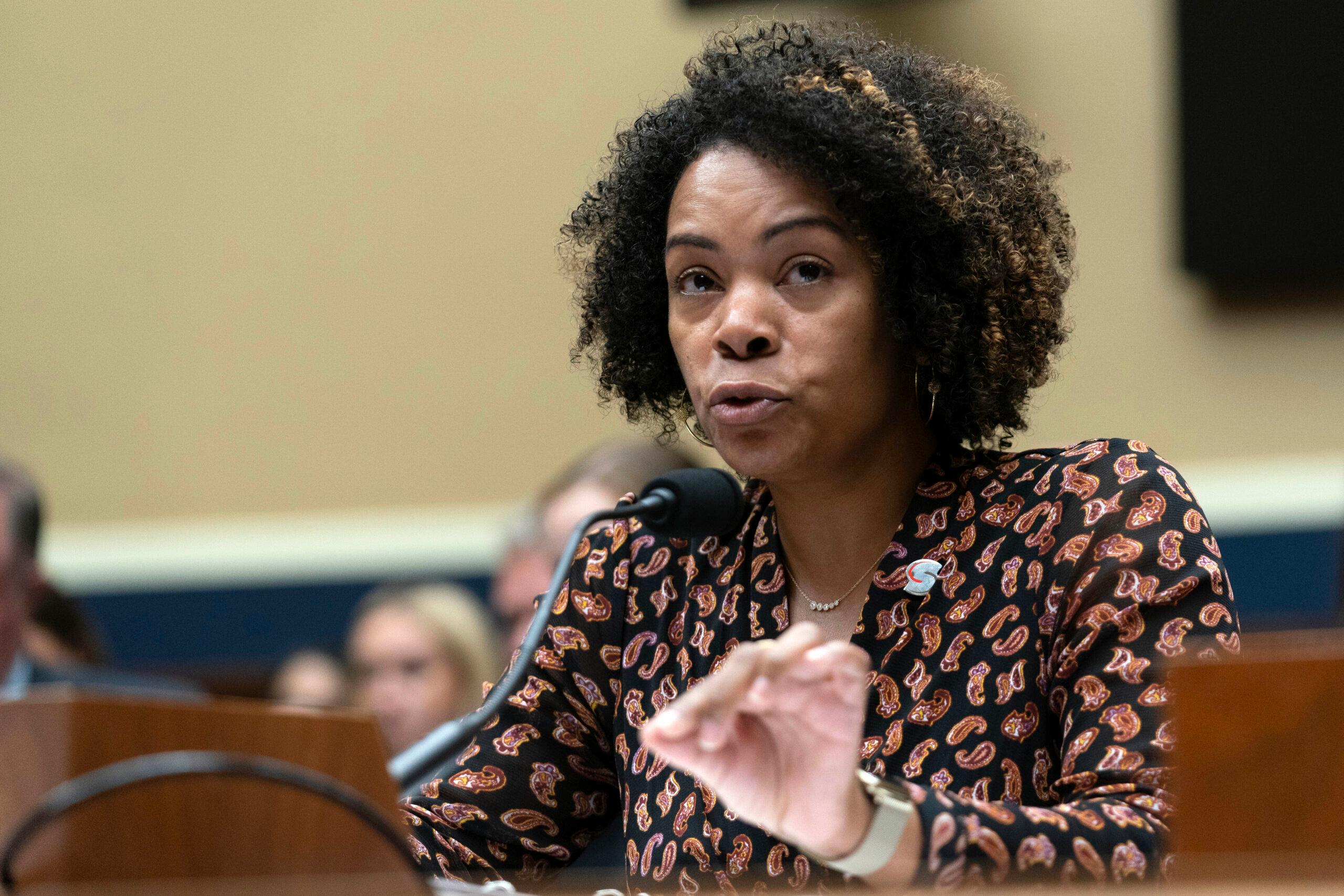
When is violence terrorism, and when is the perpetrator a terrorist? So far that label hasn't been applied to the suspected gunman who opened fire on a Thornton Walmart last week who killed three, or the Texas church shooter who killed 26.
Not much has been made of their religious backgrounds either, even when a stack of four bibles was found in Walmart shooting suspect Scott Ostrem's apartment.
"If those were Quran, I would guess that there would be a much larger talk about religion in this context," says Bryan Arva, a researcher at the University of Maryland National Consortium for the Study of Terrorism and Responses to Terrorism. "It wasn't a lead headline like it might have been in a different context with a Muslim."
#Breaking: inside #ThorntonWalmartShooting suspect Scott Ostrem’s apartment. Had four bibles, and his B&M roofing jacket. pic.twitter.com/5cNbMFsiCa
Arva and University of Alabama criminologist Erin Kearns spoke to Colorado Matters about their studies on media coverage of terrorism. Arva's research shows that the media covers terrorism differently depending on the identity of the attacker. Kearns' work shows that while Muslims commit about 13 percent of the acts of terrorism (defined by the Global Terrorism Database) in the United States, they receive almost 50 percent of the news coverage.

"Certainly the threat from Islamist terrorism is there," Kearns says. "But that's not the only source of the threat of terrorism. That's not the only ideology or motivation that leads people to commit terrorism in the United States in recent years. And focusing solely on one motivation is ignoring a large portion of the threats."
Conversation Highlights
Kearns' findings by the numbers:
"The attacks are receiving about 350 percent more coverage [if the attacker is Muslim]. But certainly other factors matter. Wether or not th perpetrator is arrested. So if the perpetrator is captured and arrested, there's more coverage throughout the criminal justice system. When attacks are on the government or against law enforcement, we see more coverage. And then as there are more fatalities we see more coverage as well."
Kearn on her research that shows people's bias towards Muslim perpetrators:
"My colleagues and I have actually conducted experimental studies, where we control everything about a hypothetical attack. So we tell participants, they'll read a story about an attack that happened, and we're able to control all of the factors. So we control how many people were killed, and how many perpetrators there were, what the target was, what the weapon was. And the one thing that we varied in these experiments was whether at the end of the attack, the perpetrator said 'heil Hitler' or 'Allahu Akbar.' What we found was, when a perpetrator was saying a phrase that sounds like it was an attack committed in the name of Islam, people were significantly more likely to call that terrorism, than an absolutely identical attack where the perpetrator said 'heil Hitler.'"
Arva on why an attacker's identity might not be the strongest indication of a propensity to commit an act of terror:
"There's been a lot of research done to try and see if there's a relationship between religion and religiosity and terrorism, and little to no relationship has ever really been found. So if we're trying to find populations that are more susceptible, and more likely to be radicalized or engaged in violence, then if we're looking at religious communities, we might be looking in the wrong places. Something that might be a better area to look at is people who have a history of domestic violence, or were abused."
Full Transcript
Ryan Warner: This is Colorado Matters from CPR News. I'm Ryan Warner. When is an attack terrorism and the attacker a terrorist? So far, that label has not been applied to the gunman who opened fire on a Thornton Wal-Mart last week or to the Texas church shooter. Nor has much been made of their religious backgrounds. Why don't we hear now from two researchers who study how attacks are perceived by the public and portrayed in the media. Erin Kearns is a criminologist at the University of Alabama. Welcome to the program. Erin Kearns: Thanks for having me, Ryan. RW: And Bryan Arva studies terrorism and the responses to it at the University of Maryland. Hi, Bryan. Bryan Arva: Hello. How's it going? RW: It's going well. Thanks for talking to us. Erin, is there a widely agreed upon definition of terrorism first off? EK: Sure. Certainly there's been some debate amongst academics and the policy world over the years about what exactly is defined as terrorism. Generally it's accepted that one of the key hallmarks of terrorism is that there is a political motivation. Sometimes that's thought of more broadly as political, economic, religious, or social motivation. In terms of my research, I rely on the definition that's provided from the Global Terrorism Database. RW: This database is interesting because it considers the Columbine shooting in Colorado in 1999 terrorism. So is, according to its definitions, the shooting at a Planned Parenthood in Colorado Springs in 2015. Your work, Erin, looks at how much media coverage different attacks get. What have you found are the factors that influence how much and what kind of coverage attacks get? EK: Sure. We looked at all terrorist attacks according to the Global Terrorism Database from 2006 to 2015 here in the United States. We were only looking at print media coverage. What we found is that there are a couple of factors that consistently impact the amount of coverage that an attack is receiving. The thing that has the most significant impact is whether or not the perpetrator is Muslim. When a perpetrator is Muslim, the attacks are receiving about 350% more coverage, but certainly other factors matter. Whether or not the perpetrator is arrested. So if the perpetrator is captured and arrested, there's more coverage throughout the criminal justice system. When attacks are on the government or against law enforcement, we see more coverage. Then as there are more fatalities, we see more coverage as well. RW: What do you think the Muslim thing's about? EK: Well I think that's a really interesting and complex question. Drawing from the larger literature in social psychology, political science, and sociology, we see that the notion of in-group and out-group perceptions, that people perceive those who they think are more like them to be sort of in a more positive light. Conversely, people perceive those they think are more different, more negatively. So this might be drawing out some of the over-coverage of attacks when the perpetrator is Muslim and viewed perhaps as more of a "other" by large segments of the population. RW: You'd expect that to be especially true in a non-majority Muslim nation like the United States, I gather. EK: Yes. RW: So 350 percent more coverage if the attacker was Muslim. Now if you are the casual observer paying attention to that coverage, you might think that Muslims are disproportionately behind attacks. Is that the case? EK: So I think that's kind of a complex question. When you think about this universe of terrorist attacks in the US over this 10-year span, we see that about 13 percent or so are perpetrated by Muslims so that's certainly not the majority of the attacks. Now those attacks tend to be more lethal, and still 12.5 percent, 13 percent of the attacks, that's still disproportionate in relation to the Muslim population in the United States. It's a little bit complex in how to answer that. RW: But let me cut to the chase here. Who in this country is the greatest threat? That is to say if you look at past attacks, who's most often perpetrating? EK: If we're thinking about threat in terms of the number of attacks, about half of the attacks in that 10-year period here in the US have come from far right-wing extremists. Though if we think about threat in terms of the number of fatalities, we're seeing that there's higher fatality rates from attacks perpetrated by Muslims. RW: Higher fatality rates, does that mean total number? EK: In terms of the total number, I think it's about 50%, but these attacks, on average, each individual attack tends to have a higher number of fatalities than attacks by non-Muslims. RW: Okay. It is often that these attacks by Muslims are defined as terrorism because there are political declarations made in their wake. "I did this for ISIS," for instance. But what you're saying is that though those attacks tend to be deadlier in this country, in terms of the overall number of specific attacks, that's largely what, white people, I guess you're saying. EK: Yes. In terms of the number of attacks, yes. RW: Well I want to bring in Bryan Arva who studies terrorism and the responses to it at the University of Maryland. I appreciate your patience, Bryan. Your work looks really more at the content of the coverage, how the media talks about these events, and you look specifically at the attacks done by Dylann Roof and Omar Mateen. Roof killed nine African-Americans in a Methodist church in South Carolina. Mateen killed 49 people at the Pulse Nightclub in Orlando. Why did you choose to compare those two events. BA: So my coauthors and I wanted to look at the content of coverage across attacks based on identity. We figured that the Omar Mateen Pulse Nightclub shooting and the Dylann Roof church shooting in South Carolina were a good comparative case study because they had a lot of similarities. They were both lone attackers. They both used guns as their weapons. Both of the attacks could plausibly be considered hate crimes. We figured that because of these similarities, we should see some similarities in the news coverage as well. That was not the case. There were very different types of media coverage based on the identity of the attacker in these cases. RW: Well let's dive into what that looks like. I'll say that both of them, by the way, Dylann Roof and Omar Mateen were born in the United States, right? BA: That's correct. RW: Yeah. What did you notice? BA: So we noticed that the amount of times that words like terrorism and terrorist and religion and radical appeared in these news articles was much, much higher for all the articles that were discussing the Pulse Nightclub shooting carried out by Omar Mateen. Whereas with Dylann Roof, we saw more things talking about mental health and whether or not the attack was terrorism. For Omar Mateen, it was much more of a different frame that was looking into his religion and his connections. How was he radicalized. Whereas with Dylann Roof, it was much more given the covering in terms of the attack occurred at Emanuel AME Church, the type of weapon that he used. It wasn't speculating on when was Dylann Roof radicalized, or did he have relations with radical groups. The thing about this is that Dylann Roof said that he wanted to start a race war, and he had very strong connections in terms of social media presence to right-wing extremist groups. Whereas Omar Mateen, the main connection was that he said on the phone that he was making the attack in the name of ISIS, but besides that there was very little to connect him to ISIS or any extremist groups. RW: The subtext, which is not so subtle here, is that even though Dylann Roof had many more apparent terrorist ties, and again hearkening back to the definition of terrorism that we established at the beginning, than Omar Mateen. Yet Omar Mateen was the subject of much more coverage invoking that term terrorist. Why is that? BA: I think it goes back to what Erin had talked about with in-groups and out-groups potentially. It's hard for me to speculate, because I haven't looked at all the cases, but we do see in just anecdotally that a lot of the coverage when there's a Muslim perpetrator we get more talk immediately about it's terrorism, talking about Islam, and their religion, and where were they radicalized. Were they radicalized online? Talking about what mosque did they attend, trying to find out those types of things. Whereas when it's a non-Muslim attacker people seem to be much more cautious in using words like terrorism and terrorist. RW: Erin Kearns, again Criminologist at the University of Alabama, can you blame people for that? In other words, the highest profile attack on US soil, I suppose since Pearl Harbor, was the attacks of 9/11 perpetrated by Muslims. Isn't that sort of stuck in people's minds, and thus influencing how they see attacks from then on? EK: Certainly. I mean, 9/11 of course had a huge impact on public perception of terrorism. Not just here in the United States, but around the globe. It's probably difficult, if not impossible, to really quantify what that impact is, but building off something that Bryan had said, that my colleagues and I have actually conducted experimental studies. Where we control everything about a hypothetical attack. So we tell participants, they read a story about an attack that happened, and we're able to control all of the factors. So we control how many people were killed, we control how many perpetrators there were, what the target was, what the weapon was. One thing that we varied in these experiments was whether at the end of the attack the perpetrator said Heil Hitler, or Allahu Akbar. What we found is that when the perpetrator were saying a phrase that sounds like it was an attack committed in the name Islam, people were significantly more likely to call that terrorism, than an absolutely identical attack where the perpetrator said Heil Hitler. RW: And given the definition of terrorism, which is politically or socially motivated, there's no doubt that saying Heil Hitler would be considered terrorism? EK: Certainly. From an academic perspective, from a definitional perspective, certainly that falls within the framework of what we consider to be terrorism, but we don't see that as clearly in public consciousness. It's also in all fairness, that's the not the only thing that matters. People were more likely to say it was terrorism when the perpetrators used a bomb versus guns, when there are multiple perpetrators versus a lone actor, when the target was a government building versus a Synagogue. There's a similar research that colleagues of ours at Harvard have done, and they look at even more sort of different attack factors, and found some of these same patterns. That perpetrator identity absolutely matters, but there are other things about the attack that impact whether a member of the public thinks it's terrorism or not, that have nothing to really do with what the actual definition of terrorism is. RW: What makes this work important? Like not just purely academic. In other words, most of us don't live in an academic world, and don't compare our every day definitions with what academics use. Why do you think this work matters, beyond your department say? Bryan, how would you answer that and then I'll have you jump in Erin. BA: So I think it's relevant and important for a number of reasons. Framing, and the academic work done on framing does show that negative portrayal of Muslims in the media can have a significant effect on things like people's views on immigration policy, people's views on whether or not some civil rights should be taken away from Muslim Americans when looking at terrorist attacks, whether or not America should intervene in foreign Muslim countries. So there are a lot of academic studies that have shown that negative framing of Muslims in the media can have a negative effect on other things as well. Then secondly, there's been a lot of research done to try to see if there's a relationship between religion, and religiosity and terrorism, and little to no relationship has ever really been found. So if we're trying to find populations that are more susceptible and more likely to be radicalized or engaged in violence, then if we're looking at religious communities we might be looking in the wrong places. Something that might be a better area to look at is people that have a history of domestic violence, or were abused, because a lot of the attacks that have occurred recently, even in Texas with Devin Patrick Kelley, he had a history of domestic violence. A lot of the other people, both Omar Mateen and Dylann Roof had a history of domestic violence, or were abused themselves. So this might be a better area to look at if we're trying to find effective counter and violent extremists method to dealing with communities that are more susceptible to being radicalized, or more susceptible to engaging in violence. RW: Erin, how do you answer the question of why you do this work? EK: I think, building off of what Bryan said, that we also see that these negative perceptions, or portrayals, or inaccurate portrayals of where threats are coming from, this can lead to increases in hate crimes, it can lead to changes in counter terrorism preferences amongst the public, both here in the United States and abroad. As well as, beyond just the public level or the politician level as well. So if we're focusing our attention in the counter terrorism space, specifically on Islamist extremists, we're missing, that is of course a threat, but we're missing a large swath of the threat that's not being focused on, such as from far right-wing extremists, from far left-wing extremists. By focusing on just one aspect of the threat is really not helping us to address the problem overall. BA: Can I interject for a second? RW: Oh yeah, sure. BA: With regard to what we're talking about right now, that might be interesting to your listeners. They found a number of Bibles in the apartment of Scott Ostrem, who committed the attack that you mentioned before at Wal-Mart, where he walked into Wal-Mart and he killed three people. RW: Here in Colorado. BA: Yes. In Colorado, yes. And I had seen very little about this in the media. Where if they had gone in there and found a bunch of Korans instead of Bibles, I feel like this might have been a much larger news story, on a, at least on a local scale but on a national scale most likely as well. RW: I want to thank you both for being with us. EK: Thank you so much for having us. BA: Thank you. |









